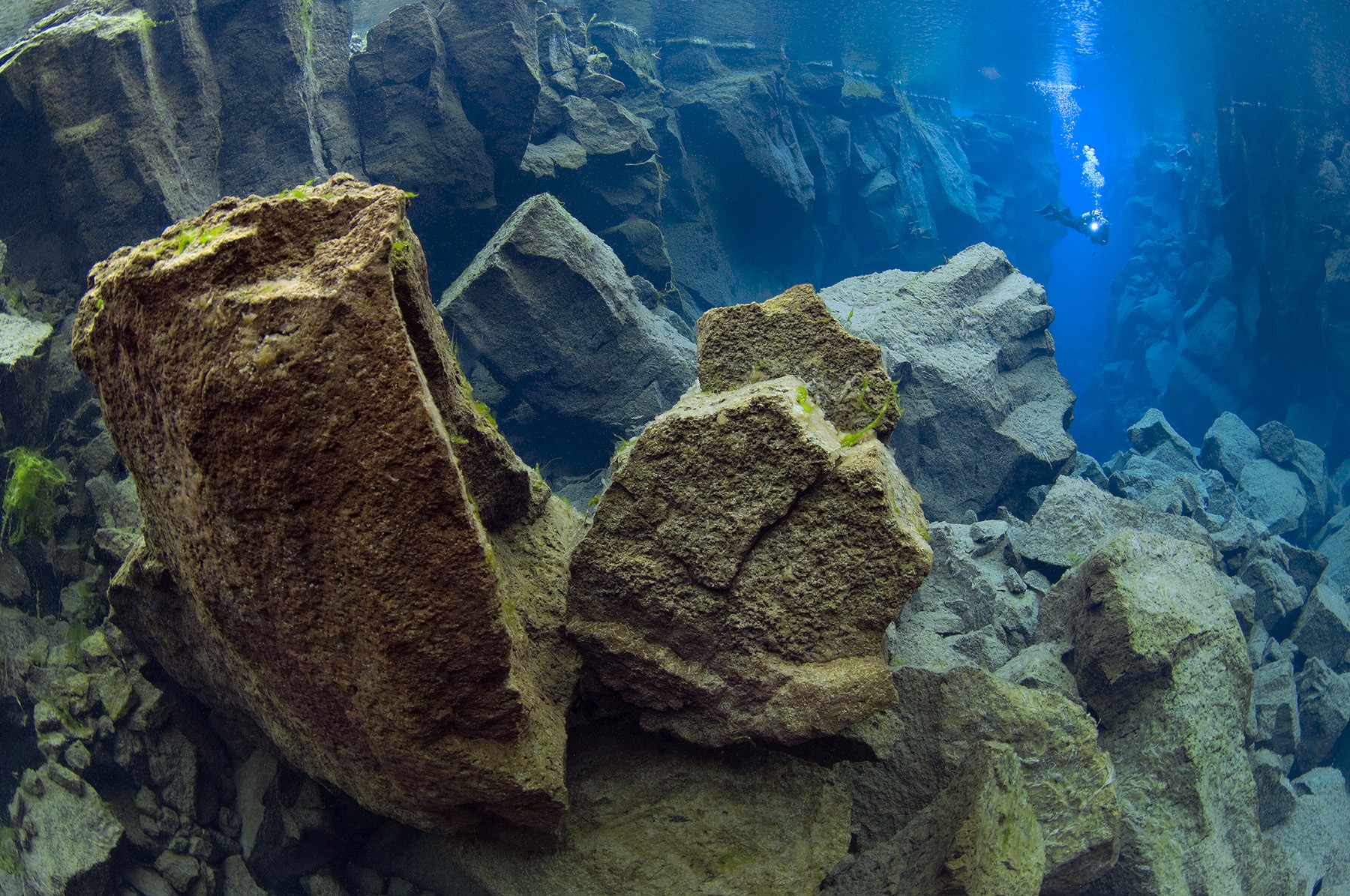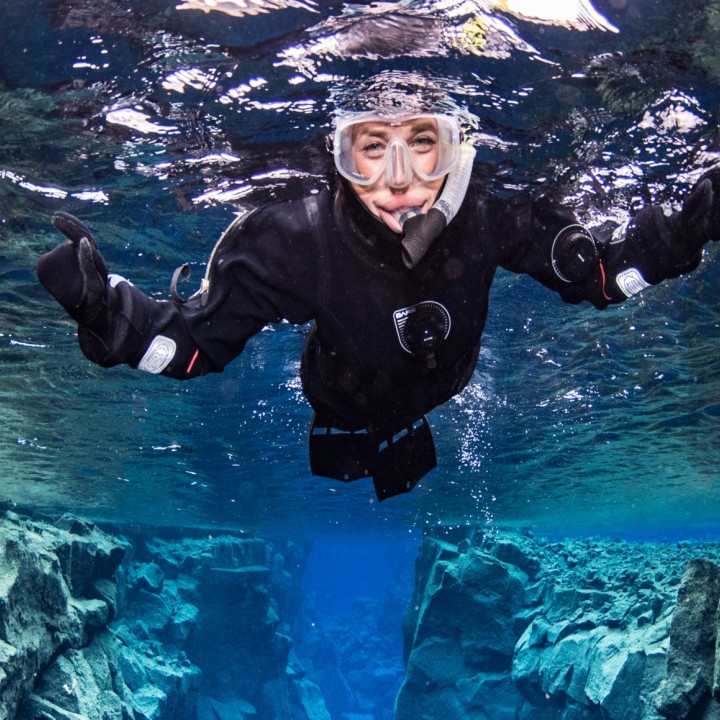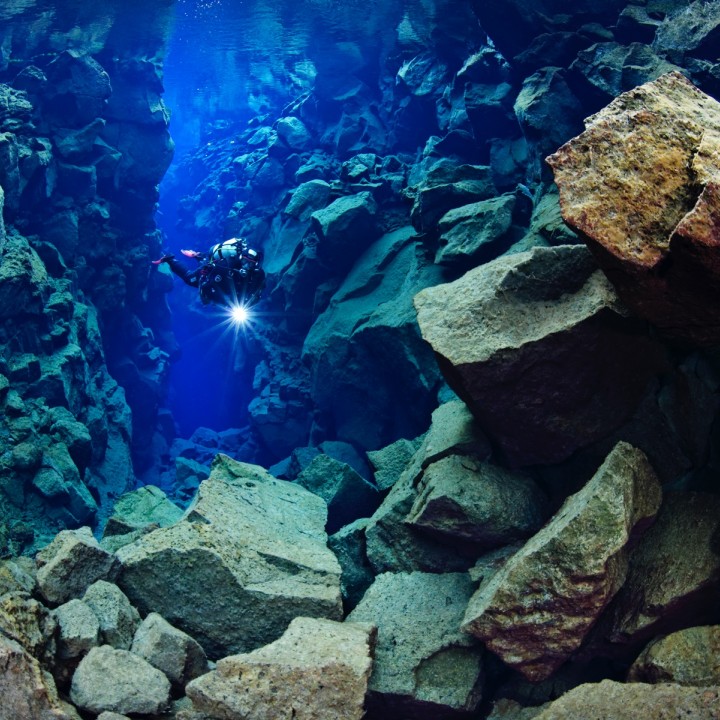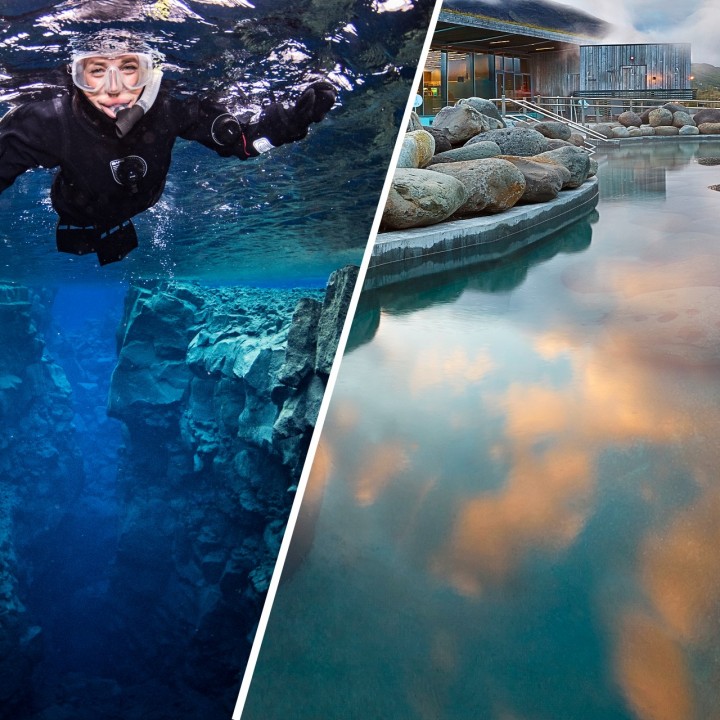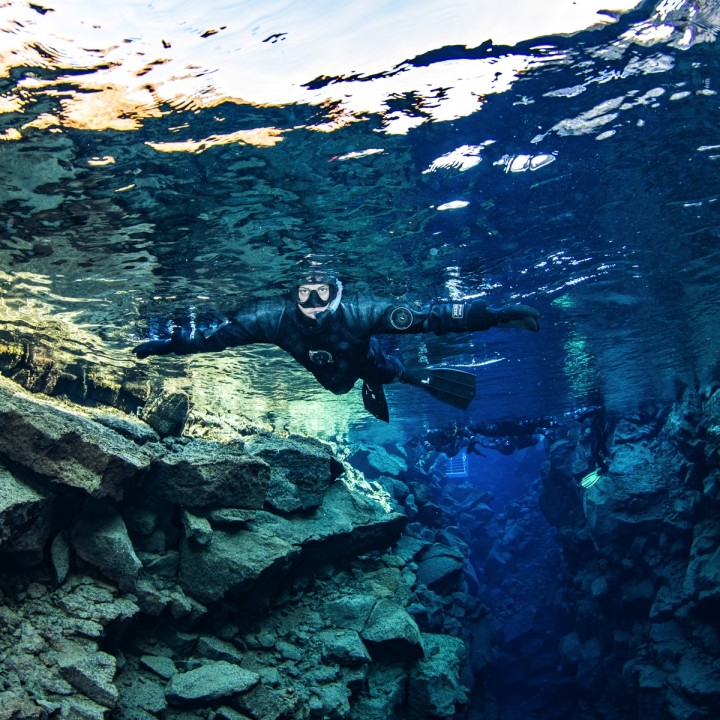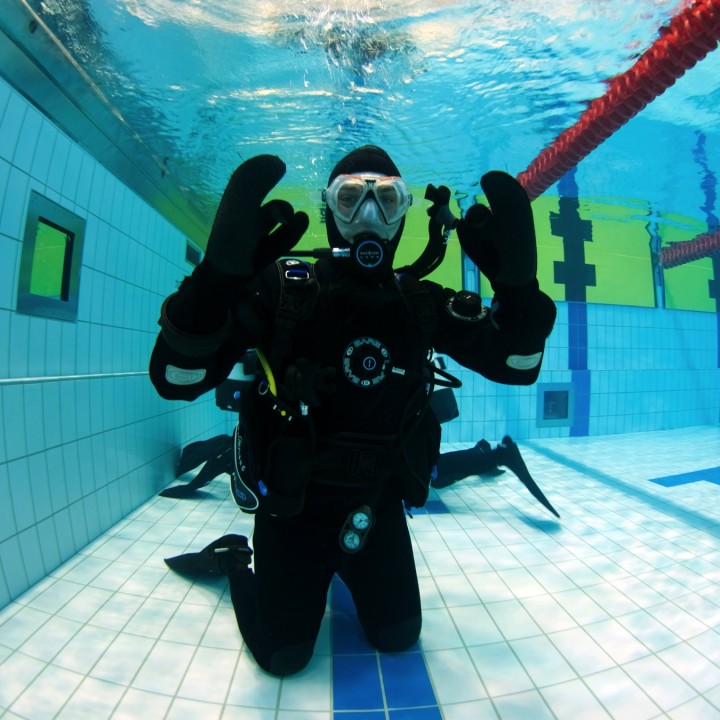Silfra, between the continents
The Geology of Silfra
Silfra is a fissure between the North American and Eurasian tectonic plates in Thingvellir National Park. The rift was formed in 1789 by the earthquakes accompanying the divergent movement of the two tectonic plates. The diving and snorkeling site at Silfra is right where the two continents meet and drift apart about 2 cm per year. Silfra is the only place in the world where you can dive or snorkel directly in a crack between two tectonic plates.
The earthquakes of 1789 opened up several fissures in the Thingvellir area, but the Silfra fissure cut into the underground spring filled with glacial meltwater from the nearby Langjökull glacier. The water is filtered through porous underground lava for 30-100 years before reaching the spring that feeds into Silfra. The water is therefore extremely pure by the time it reaches the north end of Thingvellir lake and it allows for underwater visibility of over 100 meters in Silfra. The glacial meltwater remains very cold in Silfra, but as fresh water is constantly filling the fissure, the water never freezes and remains 2°C – 4°C year round. The underwater visibility of the water in Silfra will rarely, if ever, be surpassed. Silfra is said to have the clearest water in the world; feel free to have a sip of this pristine water at any point during your dive or snorkel.
As Silfra is right at the crux between the tectontic plates, it is a very “living” dive site in that it is constantly undergoing changes, both large and small. The fissure widens incrementally, but more drastic changes to the depth profile have occurred during earthquakes in which boulders and rocks fall into the crack. This shifting of the earth creates new tunnels, caverns, and underwater terrain.
On our Diving Silfra Day Tour we offer the PADI Silfra Tectonic Specialty Course, where we dive deeper into the geology of Silfra.
How to experience Silfra with us
Sections of Silfra
The Silfra rift occupies in total a relatively small surface area, approximately 600 by 200 meters. Walking from the parking lot to Silfra will lead you past a pool of water prior to the Silfra entrance. Hidden from view is a cave that extends from this pool of water to great depths—63 meters at least. Diving in all cave and overhead environments is strictly prohibited in Silfra and the Silfra cave is an especially dangerous for diving due to its narrow passages and instability. At the other end of the pool, a tunnel links this body of water with Silfra. This tunnel is known as “the toilet” due to the strong current that flushes divers down the swim-through. Diving through this tunnel is also now prohibited.
The main part of Silfra has been divided into four main sections: Silfra Big Crack, Silfra Hall, Silfra Cathedral, and Silfra Lagoon. The first three sections are deep, expansive canyons, sometimes extending down into dark and uncharted cave systems. This series of impressively deep cracks in the earth is followed by a shallow lagoon with fields of algae. Here divers and snorkelers can see across the entire span of the lagoon, about 100 meters. We plan our dives and snorkel swims so that we are able to see all the parts of Silfra in every Diving Silfra Day Tour and Silfra Snorkeling Tour. Silfra is at some points very deep (cave systems can descend to approximately 60 meters). If you are diving, the maximum allowed depth of your dive in Silfra will be 18 meters, and the average depth of the dive is between 7 and 12 meters.
Life in Silfra
Although Thingvellir Lake has an abundance of fish species and trout fishing is very popular in the lake, the fish usually do not venture far into the Silfra fissure. The marine life in Silfra consists mostly of bright green “troll hair” and different types of algae that provide a colorscape unlike anything that occurs naturally above the surface.
History of Diving in Silfra
Diving in Silfra began in 1966. A teacher at the Stýrimannaskóli (“Seafaring School”) in Reykjavík, Þröstur Sigtryggson, had just returned to Iceland from the United States where he had learned to dive. Þröstur advertised a beginner’s diving course and a small group of interested individuals gathered to learn this new sport. After completing their course, this group went to dive in Silfra and the surrounding fissures at Thingvallavatn. Níkúlás Halldórsson, one of these first divers, says they were drawn to Silfra for the same reasons as we are today—they thought it was beautiful and clear. All of the original divers wore wet suits, as dry suits were unheard of for recreational divers at the time.
Tómas Knútsson, the founder of DIVE.IS, first dived in Silfra in 1976. Like the original Silfra divers, Tómas used a wetsuit when diving in Iceland. He switched to a dry suit in 1989, when he started to dive year round in Silfra and elsewhere in Iceland. Silfra began to gain international recognition as a dive site through Tómas’s efforts in the 1990s and 2000s.
Location & Facilities
Silfra is located in Thingvellir National Park, about an hour’s drive from Reykjavík. Silfra is easily accessible in the park via both paved and gravel roads. The parking lot directly adjacent to Silfra is reserved for use by commercial vehicles only. A metered parking lot (P5) just down the road is available to participants on the Silfra snorkeling and diving tours. Thingvellir National Park has an Information Center at the junction between road 36 (the main road from Reykjavík) and road 361 (the road turning into the park). The Information Center has a café, shop, and restrooms. Outdoor toilets are also available at Silfra. If you are coming on tour with us we will meet you at the Silfra meeting point.
Silfra and Thingvellir National Park is located on the Golden circle, a very popular sightseeing route in Iceland. Other sightseeing locations on the Golden circle are Gullfoss waterfall, Geysir hot spring and Kerið crater.
The entrance to Silfra is about a 100 meter walk from the Silfra parking lot. Snorkelers and divers enter Silfra by descending a metal staircase, which ends in a submerged platform. The submerged platform allows for divers to do their final buddy checks and for snorkelers to adjust to how the dry suit changes when immersed in a water environment. A metal exit platform at the end of Silfra in the Lagoon provides an easy exit procedure for divers and snorkelers, as well as protecting the fragile terrain from disturbance. Exiting Silfra at points other than the entry and exit platforms is not allowed, except in the case of an emergency. The walk back to the parking lot from the exit platform is about 400 meters.
Thingvellir National Park
Thingvellir National Park has been declared a UNESCO WORLD HERITAGE SITE both for its cultural and historical significance as well as natural and geological uniqueness. The park surrounds part of Iceland’s largest lake, Thingvallavatn. The area lies directly on the mid-Atlantic ridge, where the North American and Eurasian tectonic plates are slowly diverging. Continental drift created fissures that are now submerged, such as Silfra and the nearby Davíðsgjá, as well as enormous rifts and canyons above water.
From 930 AD until 1798, Thingvellir was the assembly site for the national parliament of Iceland, the Althing, from which Thingvellir derives its name. The assembly was a forum to recite the laws and make amendments, to resolve conflicts and feuds, and to make trade and marriage arrangements. It is thought that speakers at the assembly made use of the acoustics of canyon walls to help their voice carry further.
If you have friends or family accompanying you on your tour who do not wish to get into the water themselves, the area around Silfra is full of lovely walking trails that lead through this fascinating place. You can check out our Silfra Blog, where we have gathered together a few things to do around Silfra.
Video about Silfra
A Silfra dive in moving images, text and music
Rules and regulations
As Silfra is located in Thingvellir National Park, the snorkeling and diving activities are subject to rules and regulations set by the national park authorities. The national park authorities stipulate that
- all divers must have at minimum Open Water diving certification from an internationally recognized diving organization. Open Water certification means that a diver is certified to dive to 18 meters without the direct supervision of an instructor.
- all divers in Silfra must be certified in dry suit diving by an internationally recognized diving organization. In lieu of this, divers may present proof of a minimum of 10 logged dry suit dives within 2 years of the planned dive at Silfra. These logged dry suit dives must be signed off by an instructor from an internationally recognized diving organization.
- all divers must be at minimum 17 years of age.
- diving in caves and any overhead environment is strictly prohibited.
- the maximum allowed depth of diving is 18 meters.
- the ratio of divers to guide shall not exceed 3 to 1.
- the ratio of snorkelers to guide shall not exceed 6 to 1.
- SCUBA diving in a wetsuit is not allowed.
- tour operators shall screen participants for swimming ability and medical fitness for the activity.
- each snorkeler and diver must pay a fee of 1,500 ISK to Thingvellir National Park.
